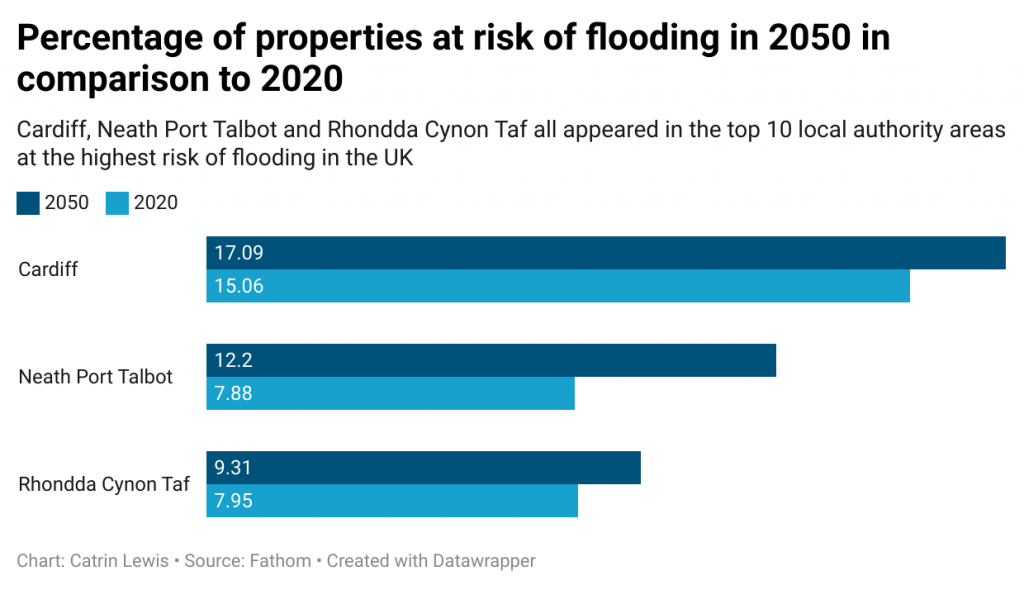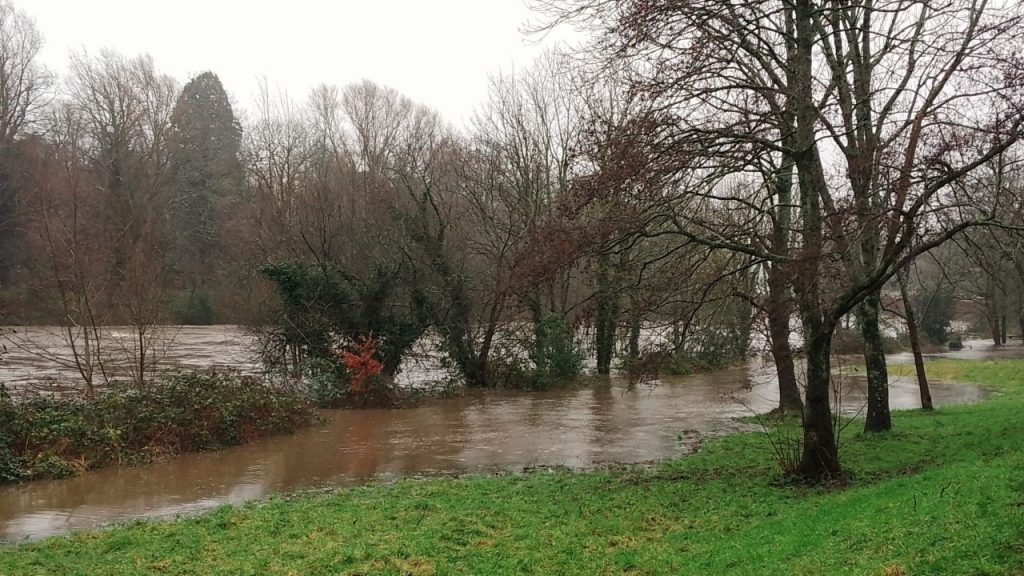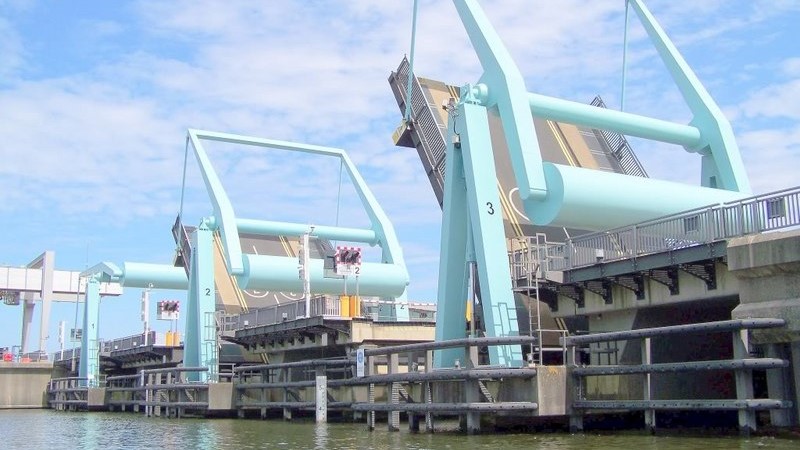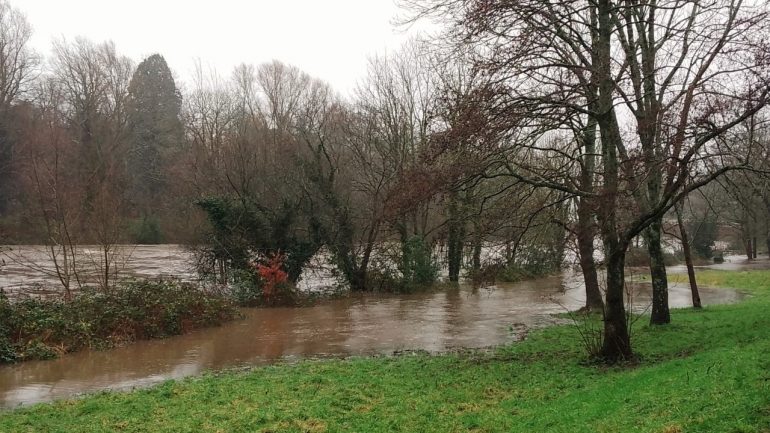Since the River Taff burst its banks in 1979 work has been done to improve defences, yet the city still faces frequent flash flooding
CARDIFF has faced a wet beginning to the year with the River Taff bursting its banks and submerging Pontcanna Fields in January.
This has raised concerns among residents with many taking to social media to share pictures of the effects of heavy rain all over the city.
Cardiff is the local authority area facing the highest risk of floods in the UK with around 33,000 properties predicted to be threatened by 2050.
This means that 17% of properties will be at risk, a rise from 15% in 2020.
Research by Fathom, who create flood risk maps taking climate changes into account, also placed Neath Port Talbot and Rhondda Cynon Taff among the top 10 local authorities facing the most threat.

Volunteer Lyn Eynon from the Cardiff Civic Society, who campaigns for the conservation of green spaces, shared his knowledge of flood risks with The Cardiffian.
While many on their morning walks were shocked to see the state of Pontcanna Fields last week, Mr Eynon explained that this isn’t the biggest concern.
“Some of the recent pictures look more dramatic than they are because the intended job of the Pontcanna Fields area is protecting the city centre from the River Taff,” he said.
“But before and after you get to the fields you don’t really have that scope for the water to be absorbed and spread out.”
The River Taff burst its banks in 1979 and left a long-lasting impact on the city.
This led to efforts to increase flood defences, the most notable of which was the Cardiff Bay barrage which was completed in 1999.
The barrage encloses water which flows from the Rivers Taff and Ely with Mr Eynon expressing his concerns that the Ely is now showing water levels rising higher than the Taff.
So, what’s causing these floods?
According to Mr Eynon, a combination of environmental and structural issues is to blame.

Credit: Michael Munnik
“The drainage in the city is not really up to the level it needs to be for a city that’s grown so much in the past few decades,” he said.
“Hard non-porous surfaces being are being used for things like car parks which means that when you have these heavy downpours the rain doesn’t get absorbed by the soil as much as it should.
“As well as being coastal, Cardiff is quite a flat city and it’s not until you get to Penylan and Cyncoed that you start getting significantly above sea level.”
He referred to climate change as one of the most significant factors behind these flash floods.
“We’re seeing a different type of rainfall now and seem to be getting once-in-a-century weather events every few years.
“It used to be persistent rain over many days which is what would build up the river, but the problem now is these very heavy and sudden bursts of rain which didn’t seem to happen when I was younger.
“That means you get local flooding problems before you hit the issues of whether the water can get into the sea,” he said.
Caro Wild, Cabinet Member for Climate Change, has also addressed these issues.
He referred to the key issues being more water use due to growing populations, increased flash flooding due to climate change and water entering drains rather than soil due to concrete paving in front yards.
In terms of the future, there is still work to be done to lessen the looming threat of floods.
The Welsh Government’s TAN 15 document, which offers planning guidance to reduce flood risk by building away from high-risk areas, was set to be published in 2021 but has been pushed back to summer 2023.
Climate Change Minister Julie James said that the pushback was “to enable local planning authorities to consider fully the impact of the climate change projections on their respective areas.”

Credit: Amanda Marshall via Geograph under the Creative Commons Attribution-Share Alike 2.0 Generic licence
The document would hinder plans such as that of a new indoor arena set to be developed in Cardiff Bay.
Mr Eynon is concerned that the implications of future flood risks aren’t being fully considered.
“I don’t think that they’ve come to grips with the potential long-term issues surrounding the barrage,” he said.
“Arena development has a proposed 45 to 46-year lease associated with it taking us out a long way from when the barrage was constructed – the best part of 80 years.”
However, he acknowledges that the council haven’t turned a blind eye to the issue having recently improved drainage in Grangetown.
In December they approved plans for a new coastal defence scheme for the Rhymney River.
A Welsh Government spokesperson said that local authorities take part in flood awareness activities and that they are investing in building and maintaining flood assets.
“Over the last Government term, we invested over £390m in flood and coastal erosion risk management through two programmes, reducing the risk to more than 47,000 properties across Wales.”



